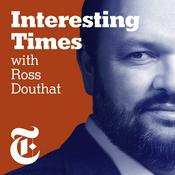Episodios disponibles
5 de 128
- Security and ObservabilityThe worlds of IT security and operations are being pulled together and AI is a catalyst that's making it happen. The focus on observability that's been part of the DevOps movement, is playing an important role in improving security effectiveness and Scott Crawford, Mark Ehr and Mike Fratto return to look at how this is happening with host Eric Hanselman. Security teams have always wrestled with making effective use of telemetry data from the infrastructure and applications they are securing. Correlating data from just the security tooling is hard enough, let alone adding operational data to the mix. Security Information and Event Management (SIEM) systems came into existence many years ago specifically to address this problem, but they were complex to configure and operate and needed tending to stay accurate. The volumes of data coming from observability initiatives was promising, but new approaches were required and AI and ML have been key to unlocking that value. Once again, we've hit an opportunity where it's all about the data and getting it to where it can be put to work. The Open Telemetry project simplified data interchange, but the question remained as to where all of this data had to live. It's not practical to get all of the data in one place, but data fabrics and federation can manage access effectively. Better correlation opens the door to many possibilities, including building a single source of truth for IT assets. There's a lot of benefit to bringing security and operations together. More S&P Global Content: AI for security: Agentic AI will be a focus for security operations in 2025 AI in action: unleashing agentic potential For S&P Global subscribers: 2026 Trends in Information Security Deal Analysis: Palo Alto Acquires Chronosphere Big Picture Report: 2026 AI Outlook – Unleashing agentic potential Credits: Host/Author: Eric Hanselman Guests: Scott Crawford, Mark Ehr, Mike Fratto Producer/Editor: Feranmi Adeoshun Published With Assistance From: Sophie Carr, Kyra Smith--------31:54
- Context EngineeringAs organizations have worked to leverage the power of AI in interacting with large language models, they've invested in prompt engineering to generate better results. But agents shift the need manage the full context of not only the prompt, but also the data that's being presented. Analysts Jean Atelsek and Alex Johnston return to the podcast to look at the new discipline of context engineering and how it's being put to work in AI environments with host Eric Hanselman. The process of context engineering looks at ensuring that the right data context is in place for agents to act on. It requires a shift from thinking that more data is necessarily better and understanding to getting the right data is the best insurance against agents picking up bad habits. We've come full circle in approaches to data and organizations need to raise the level of abstraction at which they address data need for agentic applications. We've been working through waves of capability in the march to agentic operations. Organizations have access to the same models, but how they're used is where differentiation is possible. Agentic approaches demand greater sophistication and understanding around the context with which data is presented to applications. There has to be more careful curation, to get reasonable results. More S&P Global Content: AI in action: unleashing agentic potential Next in Tech | Ep. 224: Context Around MCP Next in Tech Podcast: Agentic Customer Experience For S&P Global Subscribers: Agents are already driving workplace impact and agentic AI adoption – Highlights from VotE: AI & Machine Learning Benchmarking digital maturity: Are businesses ready for agentic AI? – Highlights from VotE: Customer Experience & Commerce Pace of AI agent advancement could spur M&A in the sales automation market Big Picture Report: 2026 AI Outlook – Unleashing agentic potential Credits: Host/Author: Eric Hanselman Guests: Jean Atelsek, Alex Johnston Producer/Editor: Feranmi Adeoshun Published With Assistance From: Sophie Carr, Kyra Smith--------25:55
- The Big Picture ReportsThe latest Big Picture reports are out and cover a wide range of topics from financial markets to supply chains and onward to technology and AI. Two of the authors, Lindsey Hall and Chris Rogers, join host Eric Hanselman to talk about sustainability, supply chains and AI. These are tightly interwoven and their dependencies spill out into geopolitics, as well. Sustainability conversations have focused on climate adaptation and resilience. Climate risks are growing and yet only 35% of businesses have adaptation plans in place. The urgent demands for AI infrastructure are consuming both energy and the materials to build data centers. Meeting those needs is shifting sustainability priorities for the companies looking to deploy AI, as well as energy focus. Renewables are still a key part of energy plans, but they've moved to an all-of-the-above approach to fuel AI-driven consumption levels. It's been what could be called an un-fun year in supply chain. Uncertainty has become the new certainty. Changes in tariff policies have had the side effect of pushing the affected countries closer together. That's led to reshoring efforts, which have seen particular growth in ASEAN countries. One of complexities of this shift is that labor forces are now competing with manufacturing automation and robotics, rather than skills and cost differentials in different regions. The rise of agentic AI is only increasing pressure on infrastructure and energy supplies as it accelerates operational velocity. More S&P Global Content: Insights in Motion: See the Big Picture How data, AI and standards can help address sustainability challenges 5 Climate Week NYC takeaways setting the scene for decision-making in 2026 Three Tools for Trump Tariffs 2.0 Climate costs are rising, but few companies have an adaptation plan All Things Sustainable Podcast Next in Tech podcast: Agentic Customer Experience CERAWeek Conference For S&P Global Subscribers: Agents are already driving workplace impact and agentic AI adoption – Highlights from VotE: AI & Machine Learning Benchmarking digital maturity: Are businesses ready for agentic AI? – Highlights from VotE: Customer Experience & Commerce Pace of AI agent advancement could spur M&A in the sales automation market Big Picture Report: 2026 AI Outlook – Unleashing agentic potential Credits: Host/Author: Eric Hanselman Guests: Lindsey Hall, Chris Rogers Producer/Editor: Feranmi Adeoshun Published With Assistance From: Sophie Carr, Kyra Smith--------26:05
- Agentic Customer ExperienceAs the holiday shopping season gets into full swing, this year thoughts are turning to agents and the changing role of AI in commerce. Sheryl Kingstone returns to discuss the impacts and offer insights into strategies for putting agents to work and working in a world of agents with host Eric Hanselman. AI is spanning generations in technology adoption and engagement in ways that previous technologies have struggled. Search and digital engagement had strong splits between different generations. The natural language capabilities of chat interfaces are stepping across technology hesitancy. But it is creating challenges for businesses in reaching their customers. Search engine optimization is well understood, but how can a business ensure it's found by AI entities? Making more information available, but being more selective about which interactions get what data is a critical balance to achieve. Bot management has become a lot more complicated. Building trust in autonomous experiences is the next big hurdle that AI technologies have to accomplish. Gen Z users are more comfortable with automated actions, but trust is still key. Building connections with brand advocates is just as important as it's always been and now has to be delivered through AI. Internal chat can be a good start and it needs to be extended to become a more complete assistant-style interaction. It requires a significant improvement from legacy chatbots and the business it creates can make it worthwhile. More S&P Global Content: 451 IT Insider: A roundup for IT decision-makers Next in Tech | Ep. 205: Agentic AI Impacts National Retail Federation looks to revitalize the modern commerce experience For S&P Global subscribers: Benchmarking digital maturity: Are businesses ready for agentic AI? – Highlights from Vot… Pace of AI agent advancement could spur M&A in the sales automation market Big Picture Report: 2026 AI Outlook – Unleashing agentic potential Credits: Host/Author: Eric Hanselman Guest: Sheryl Kingstone Producer/Editor: Feranmi Adeoshun Published With Assistance From: Sophie Carr, Kyra Smith--------28:58
- Money 20/20One of the biggest banking and payments conferences, Money 20/20, has wrapped up and the enthusiasm for all things stablecoin has continued. Jordan McKee, Sampath Sharma and McKayla Wooldridge return to discuss how this is evolving with host Eric Hanselman. The cryptocurrency has become the buzzy headline in so many of the conversations at Money 20/20. But consumers are still wary of stablecoins and the larger questions is around how financial services companies will deliver valuable services using them. Unlike previous years, there were no dark clouds hovering over the payments markets. The industry is generally upbeat and starting to embrace agentic AI. Efforts are underway to standardize agent-driven commerce with the Agentic Commerce Protocol (ACP). It's a point of cooperation across payments companies that normally compete for share of consumer wallets. There's still work to be done in developing governance mechanisms for agentic transactions and those efforts will also need to build consumer trust. More S&P Global Content: Inside the role of payments manager: Responsibilities, KPIs and strategy Next in Tech | Ep. 239: Stablecoins For S&P Global subscribers: Interest in stablecoins and agentic commerce tempered by caution – Highlights from VoCUL: Connected… Data Insight: Cross-border payments volume to surpass $17 trillion by 2030 Cross-Border Payments Market Monitor & Forecast - Data Visualization Cross-border payments, stablecoins generate buzz at a low-key Money20/20 Asia Credits: Host/Author: Eric Hanselman Guests: Jordan McKee, Sampath Sharma, McKayla Wooldridge Producer/Editor: Feranmi Adeoshun Published With Assistance From: Sophie Carr, Kyra Smith--------29:29
Más podcasts de Noticias
Podcasts a la moda de Noticias
Acerca de Next in Tech
Define your digital roadmap. Weekly podcasts featuring specialists from across the S&P Global Market Intelligence research team offer deep insights into what's new and what's next in technology, industries and companies as they design and implement digital infrastructure. To learn more, visit: https://www.spglobal.com/marketintelligence/en/topics/tmt-news-insights
Sitio web del podcastEscucha Next in Tech, La Saga Podcasts y muchos más podcasts de todo el mundo con la aplicación de radio.net

Descarga la app gratuita: radio.net
- Añadir radios y podcasts a favoritos
- Transmisión por Wi-Fi y Bluetooth
- Carplay & Android Auto compatible
- Muchas otras funciones de la app
Descarga la app gratuita: radio.net
- Añadir radios y podcasts a favoritos
- Transmisión por Wi-Fi y Bluetooth
- Carplay & Android Auto compatible
- Muchas otras funciones de la app


Next in Tech
Escanea el código,
Descarga la app,
Escucha.
Descarga la app,
Escucha.


































